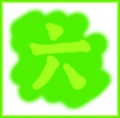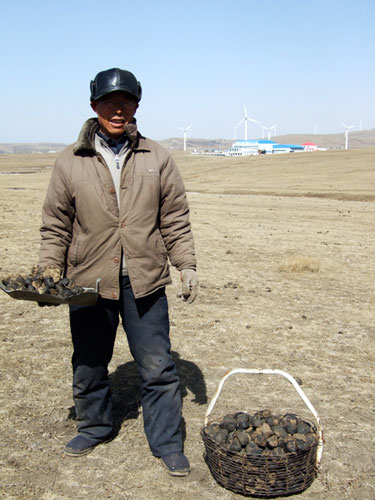I’m back to reality, and blogging, after the alternative time-zone that is HSK.
Another surreal moment for me of late was on the Huitengxile grasslands of Inner Mongolia, two weeks ago. That Monday was qingmingjie, or grave-sweeping festival – when Chinese pay respects to their ancestors face to grave. My companions and I woke up full of adventure-lust, the only tourists in a built-for-tourists herd of Mongolian yurts.
How delighted we were, then, when the family putting us up suggested a ‘Mongolian activity’ for that morning. Sign us up! Will it be horse-riding? Churning Mongolian milk? Skinning a wolf? They were … noncommital. But driving out onto grasslands, in the midst of grazing horses and whooshing wind turbines, was a promising sign.
Out of the car, each of us was handed a pair of gloves and a canvas bag. It was at this point that the nature our Mongolian activity became clear: collect as much dried horse poo as you can in three hours. The family uses this for fuel, heating up their stoves and the platform beds (kang) used in the Chinese countryside – and we were three pairs of extra hands. Twice a year, they collect as many bags as they can stuff: once in the summer, once on qingmingjie. Not grave sweeping, but shit sweeping.
Here’s a picture of one of our ‘hosts’ for this activity. You’ll notice the wind energy farm behind him: over a thousand turbines were humming on these grasslands.
-
This is about the Tibet “touristification” article – I didn’t know where else to put my comment. You make it difficult to be reached!
The Chinese name for Kumbum is NOT Xiahe but Ta’er Si. This is basic info!When you talk about connections with a friend and a novice monk there, when you talk about the bus from Xining, and you’re studying Chinese, but you don’t know the place as Ta’er Si – I wonder about the integrity in this and your seemingly endless output. I stopped reading the article at that point and am not interested in anything else you have written.
Aiyoooh!
Comments are now closed.



2 comments